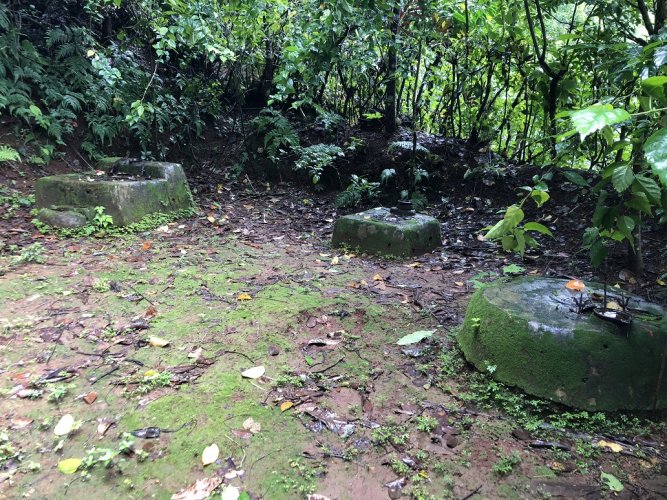
Yavakapadi, a village in Kodagu houses the second palace of the Rajas who ruled the region between 1633 to 1834. It is called Naalnaad Aramane and is located among the hills in the forest. It is a two-storey structure built in the style of the traditional houses of Karnataka and Kerala. Beside this is the Aramane Government school, where the students seem to be distracted by tourists who come to the palace regularly .
Altogether, 13 students from the neighbouring tribal settlements study in the primary grades. And, nearby is a settlement called the Kaplakeri, the only one with members of the Kapala tribe.
Scholars claim that the tribe is a mixed race, the members are descendants of the Siddis. It is said that when the Arab and Portuguese sailors brought Bantu speaking Africans from Ethiopia to India, they were employed in the courts of Indian kings. Some of them resided in Uttara Kannada, Belagavi and Dharwad districts. The Rajas of Kodagu had relatives ruling kingdoms such as Nagara, Sode, and Kittur in parts of these regions. If the Kapala really has Siddi ancestors, then the Rajas must have brought their ancestors to the palace.
There are many theories about the origin of the word Kapala. According to the researchers, the word meant a protector, as they guarded the king in former times. Yet, another theory says that the word Kapala comes from the word kafir used by the Arabs for non-Muslim African natives at one time.
The Kapala community speaks the Kodava language, dresses like Kodavas and believes in the same religious practices. Every April they propitiate their gods in the theray ceremonies, the spirit worship of Kodagu.
According to researchers, Ashok Patel and Sumitra, the tribe has 159 members and 33 families. The Raja had settled them behind the palace and gave them a piece of land. But now the land is not enough for them to make a living. Hence, the Kapalas earn by working in the neighbouring farmlands. They belong to three different kudi (clans): Aranat Kapala, Bollaat Kapala, and the Paalekat Kapala. The different clans differ in the religious activities they take part in. They form blocks, or administrative divisions, along with the Adia, the Paale and the Kudiya tribes of the village.
Aranat Kapala is one among the different families remembered during festivities at the Padi Igguthappa Temple of Kakkabe. They claim to be from Arangutur village in North Malabar. Members of this family are ‘ceremonially possessed’ by the spirit of Kunhi Boltu.
During Shivaratri and other festivals the children of the Aranat Kapala dress up in disguises as part of the festivities. Thammi, a Paalekoot Kapala, and a member of the local gram panchayat, says, ‘‘the Kapalas are politically significant at the village level but insignificant at higher levels because of their small number.’’
The children study until the fifth standard at the Aramane School, where they are taught Kannada and English. Then they go to Kakkabe Government school which is three kilometres away.
source: http://www.deccanherald.com / Deccan Herald / Home> Spectrum> Spectrum Statescan / by Mookonda Kushalappa / August 04th, 2018

